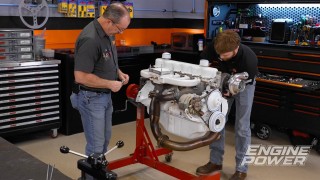Cam Timing Calculator
To effectively calculate cam timing, you need to measure several key components: the duration of the intake and exhaust cycles, the lobe separation angle of the camshaft, and the degree of advance at which the camshaft is installed.
To determine the camshaft's advance, you subtract the intake lobe centerline in degrees from the lobe separation angle. A positive result indicates the camshaft is "advanced," a negative result means it is "retarded," and a result of zero signifies it is "straight up." A cam timing calculator will use these parameters to provide specific intake and exhaust valve events.
The intake centerline is found by subtracting the advance from the lobe separation angle, while the exhaust centerline is calculated by adding the advance to the lobe separation angle. The Intake Valve Opening (IVO) event is derived from half of the intake duration plus the advance, minus the lobe separation angle. For the Intake Valve Closing (IVC), you take half of the intake duration, subtract the advance, add the lobe separation angle, and subtract 180 degrees.
Similarly, the Exhaust Valve Opening (EVO) is computed as half of the exhaust duration plus the advance, plus the lobe separation angle, and minus 180 degrees. The Exhaust Valve Closing (EVC) is calculated by taking half of the exhaust duration, subtracting the advance, and then subtracting the lobe separation angle. Valve overlap is determined by summing half of the intake duration and half of the exhaust duration, then subtracting twice the lobe separation angle.
By entering the intake duration, exhaust duration, and lobe separation angle into a cam timing calculator, it can accurately perform these calculations to determine the cam timing events.


